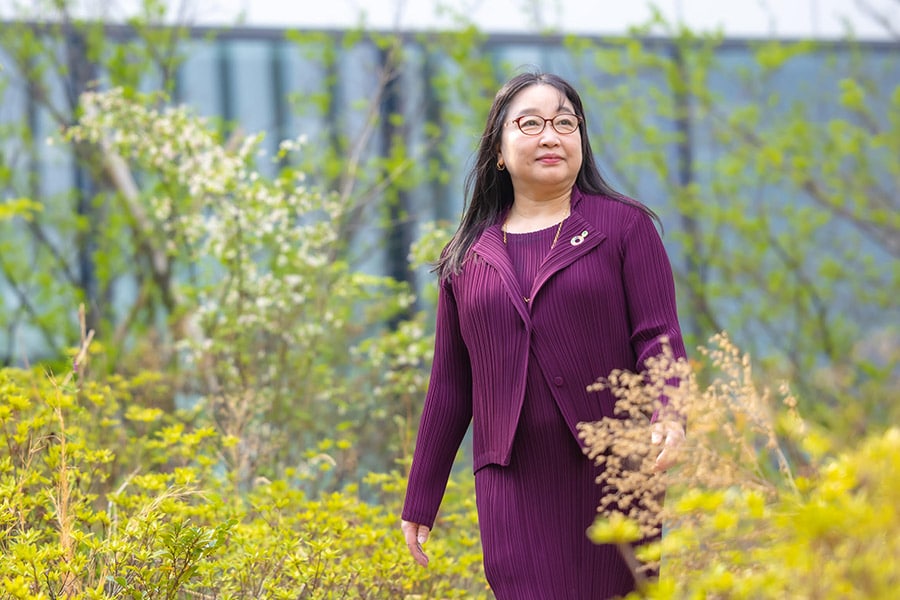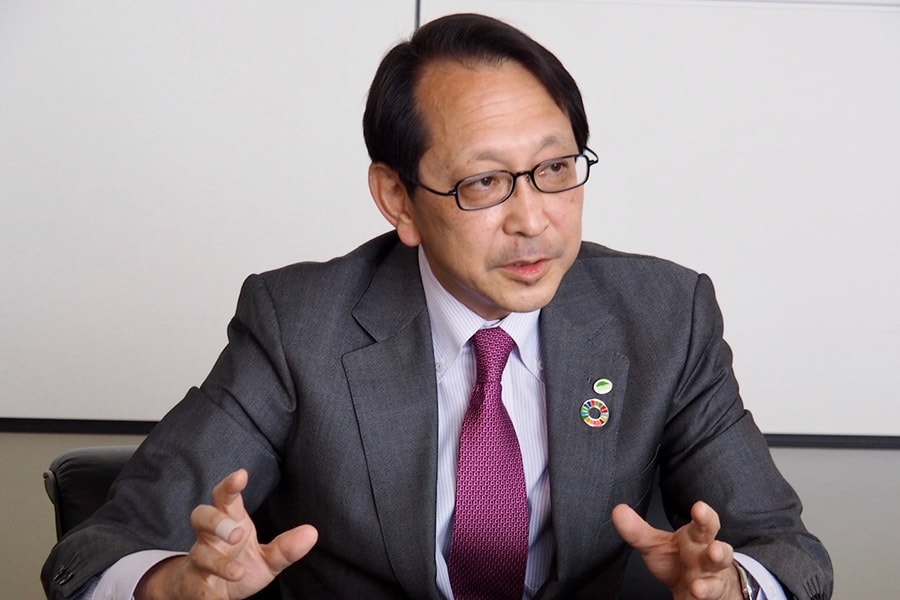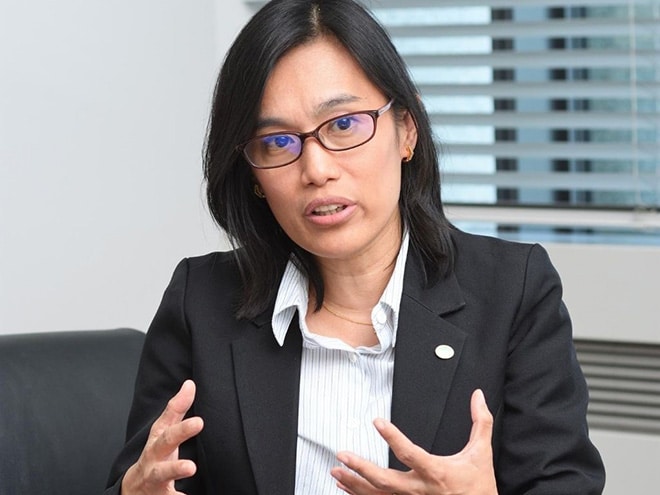Accelerating Diversity and Inclusion: Hitachi Aims 30% Ratio for Female and Non-Japanese Executive and Corporate Officers by 2030
Apr. 27, 2021
Makiko Saito
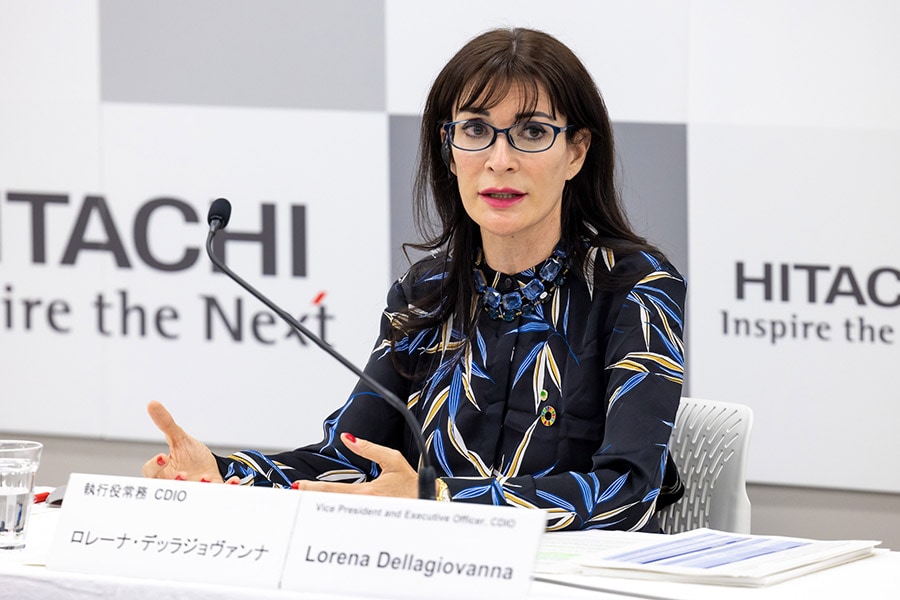
Respect for diversity and the utilization of the strengths of each individual lead to the sustained growth of an organization. This is the basic concept behind Hitachi, Ltd.'s acceleration of its diversity and inclusion (D&I) strategy. On April 20, 2021, Vice President and Executive Officer Lorena Dellagiovanna, who also serves as Chief Diversity and Inclusion Officer (CDIO), held an online press conference, in which she announced that "Hitachi will aim to achieve 30% of non-Japanese and 30% of female in Executive and Corporate Officers by fiscal year 2030."
Hitachi's first woman vice president and executive officer
"Over 350,000 employees who are working at Hitachi are unique and diverse, with each of us carrying a huge asset of skills, capabilities, ideas, experience, and values. It is therefore very important to leverage this diversity by implementing a process for behavior change and by creating an environment where people can be themselves. That will bring a huge opportunity for Hitachi to bring innovation, to tackle new markets, to better serve our customer, and to attract new talents."
Dellagiovanna opened the online press conference with the above remarks.
Originally from Italy, Dellagiovanna gained experience at Hitachi's European business sites. In April 2020, she took her role as CDIO in Japan, and from April 2021 she began serving a concurrent position of vice president and executive officer, becoming the first woman to do so in Hitachi's 111-year history.
D&I strategy: An essential contributor to corporate growth
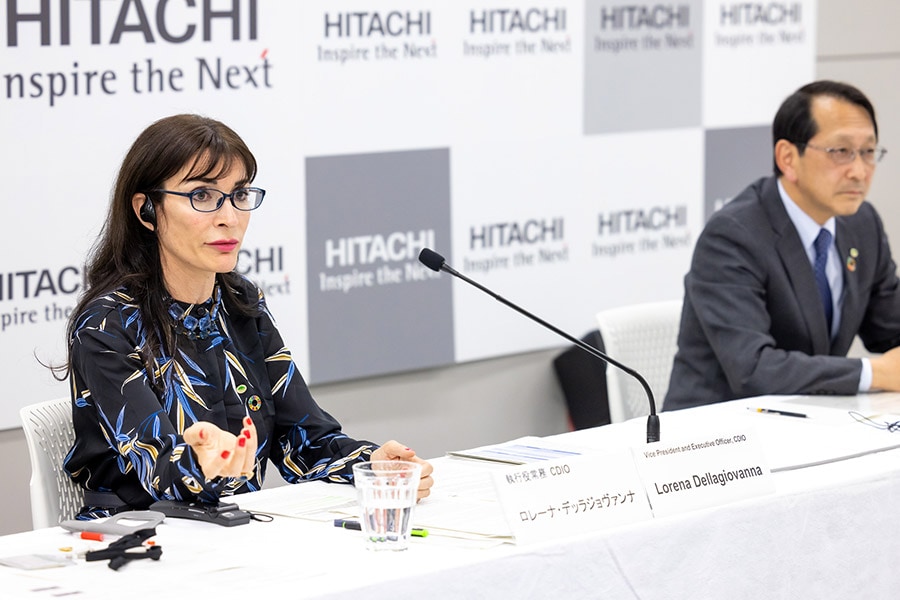
Dellagiovanna pointed out that "D&I strategy is essential to Hitachi in becoming a global leader." Studies have shown that the promotion of D&I correlates with improved financial performance and that organizational innovation and employee engagement also increase. These are also reasons why investors include the progress of D&I among the factors for making investing decisions.
According to Dellagiovanna, "Today, future growth and sustainable business depend on the creation of a vibrant workplace environment, where everyone can express freely their values and ideas to contribute to business.”
As a specific example of diversity creating innovation, Dellagiovanna presented Italy's railway system project. In this project, engineers from Japan and Italy overcame language barriers and cooperated in developing a new double-decker car for Italy's public railways.
She also cited ongoing AI research and development projects participated by engineers from around the world, leading to the utilization of their unique perspectives in terms of diverse expertise and differing sociocultural backgrounds.
Working as a D&I strategy leader
Hitachi's D&I strategy has about a 20-year history, starting with the year 2000's Support for Women's Career Advancement and, since 2012, the pursuing of the linkage of business and diversity.
In April 2021, the company’s executive class comprised 10% female and non-Japanese respectively, representing the achievement of its initial objectives. The number of female managers reached 800 as of October 2020.
During the past year, Dellagiovanna has also worked as a D&I leader toward the achievement of various objectives. She has designed and evaluated global plans, conducted competitor comparisons, established medium- and long-term goals, and pursued linkage with business. She has also participated in internal HR Committee sessions 24 times, during which she has carried out numerous discussions on future leader candidates and on the new face of human capital.
In addition, she has worked with mentoring programs for women leaders in order to promote women's engagement. She feels that this has resulted in Hitachi having "a large number of talented human resources."
Job-based HR Development will contribute to D&I strategy
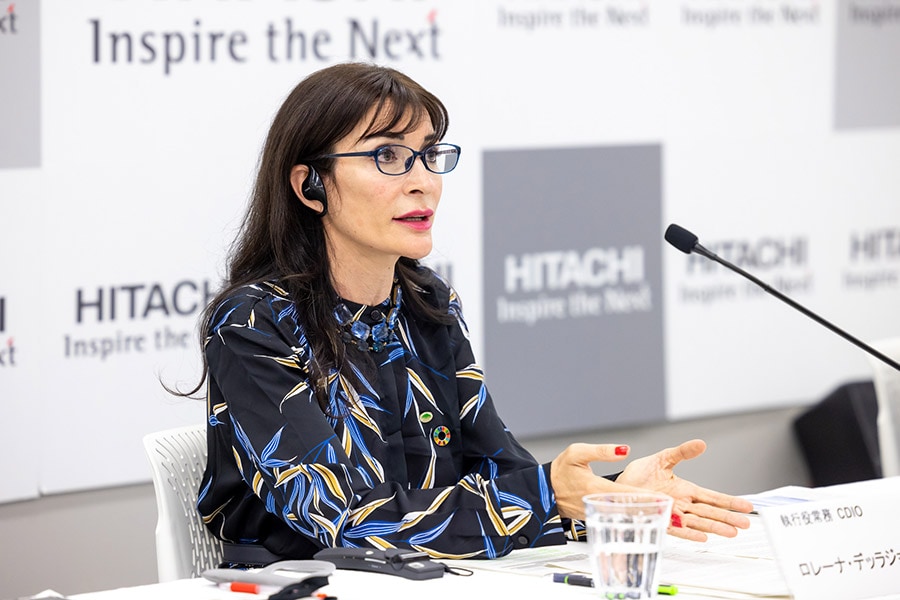
Specific measures for achieving the goal of 30% women and non-Japanese in the executive class by fiscal year 2030 were announced during the press conference.
The general plan is to publish KPIs, monitor progress, and annually disclose results. Also revealed were the following five types of KPIs: (1) leadership commitment, (2) organizational culture, (3) recruitment activities, (4) retention, and (5) promotion to higher positions.
Dellagiovanna said "We will strengthen internal communication strategy to demonstrate leadership commitment. We are also going to run a number of initiatives surrounding corporate culture, including conducting specific surveys and trainings for eliminating bias, and working on how to accelerate talent exchange globally."
Regarding recruitment activities and promotion, Senior Vice President and Executive Officer Hidenobu Nakahata, who also serves as Chief Human Resources Officer (CHRO), points out that "Job-based HR management is contributing to enhancing Hitachi’s D&I."
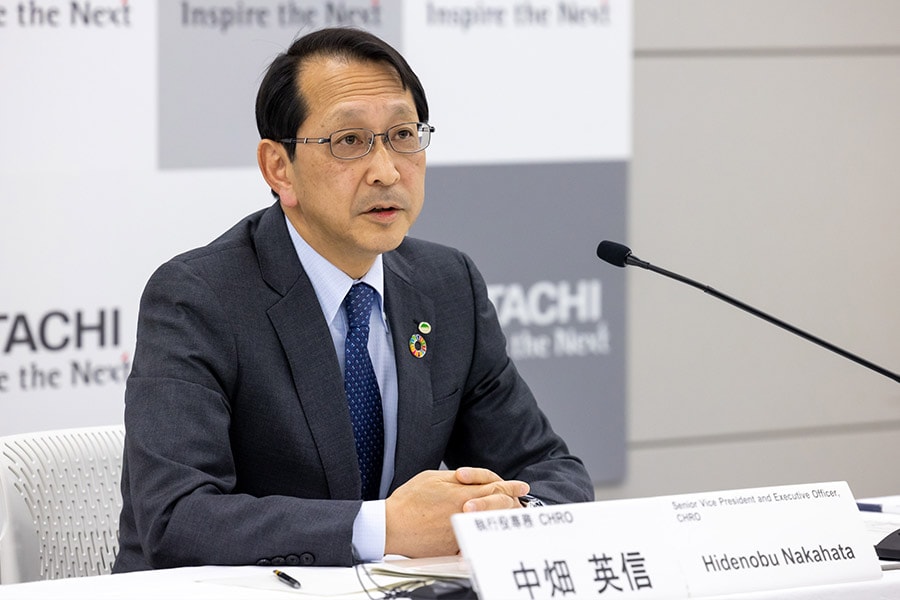
The 190,000 people that make up 55% of Hitachi's overseas workforce were recruited on a job-based basis. Job-based HR management is the practice of hiring human capital after determining positions based on job descriptions and identifying necessary skills and experience.
Nakahata said that "Japan's conventional lifetime employment system is referred to as ‘membership-type,’ however there are instances of unconscious bias having an effect on promotions and other human resource decisions. I believe that job-based HR management has tremendous impact because criteria for recruitment and promotion are clearly defined, and gender and nationality do not matter."
Ultimately, Dellagiovanna would like to see the percentage of female managers to be at about the same level as the percentage of entire women employees. She also stated emphatically that “In addition to supporting work-life balance, as women often tend to be reluctant toward gaining positions with high responsibility without having a firm understanding of what they entail, I want to empower them to be confident and not fear to fail."
Full of curiosity, Dellagiovanna says that work has always been an "encounter with the unknown."
"Whenever I didn’t understand something about technology, business, other cultures, or anything else about my job, I had always strived to communicate with people by visiting the business location and asking questions. I have always been passionate of what I do, and that’s what allows me to enjoy both my work and my personal life.”

